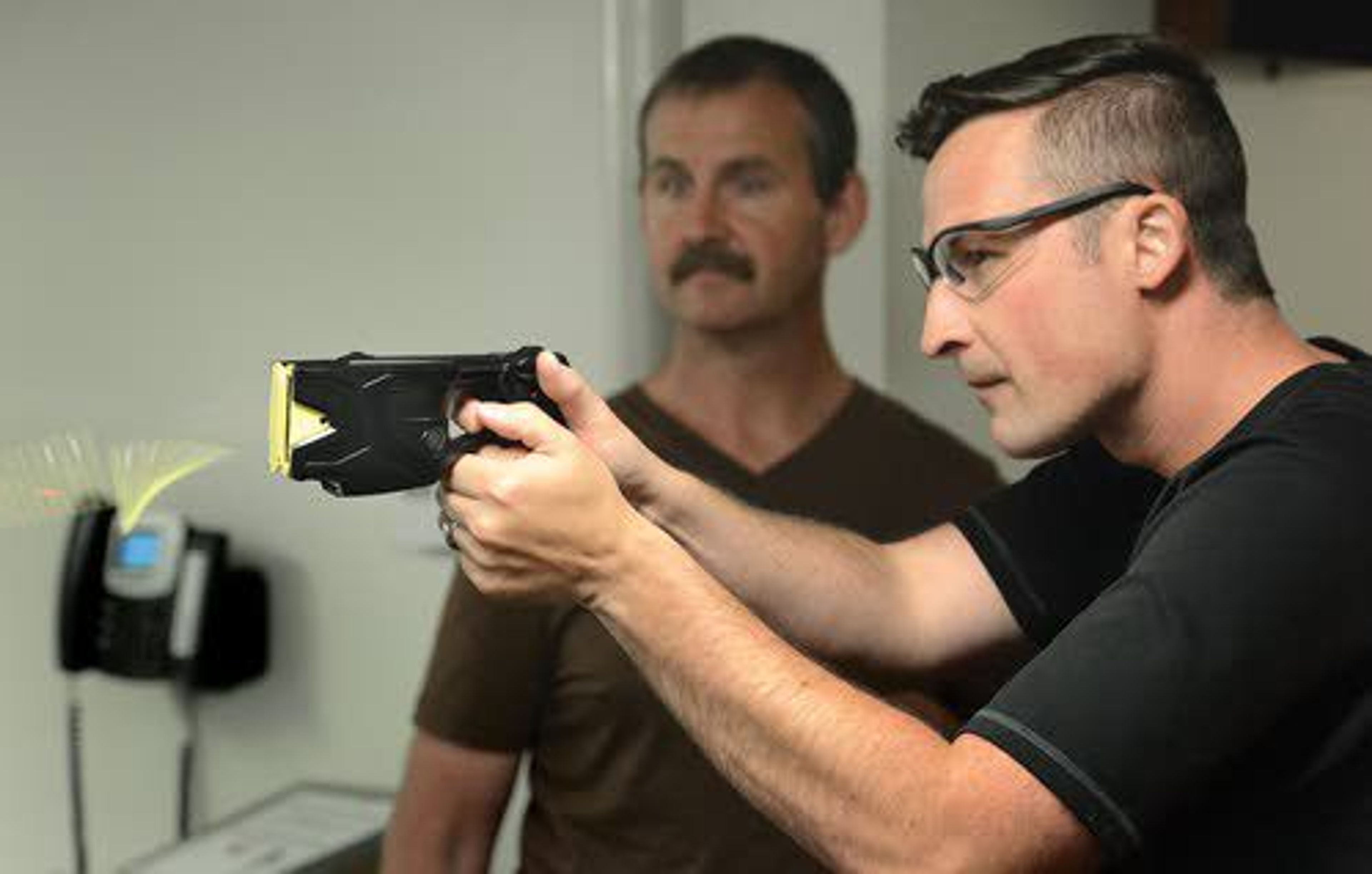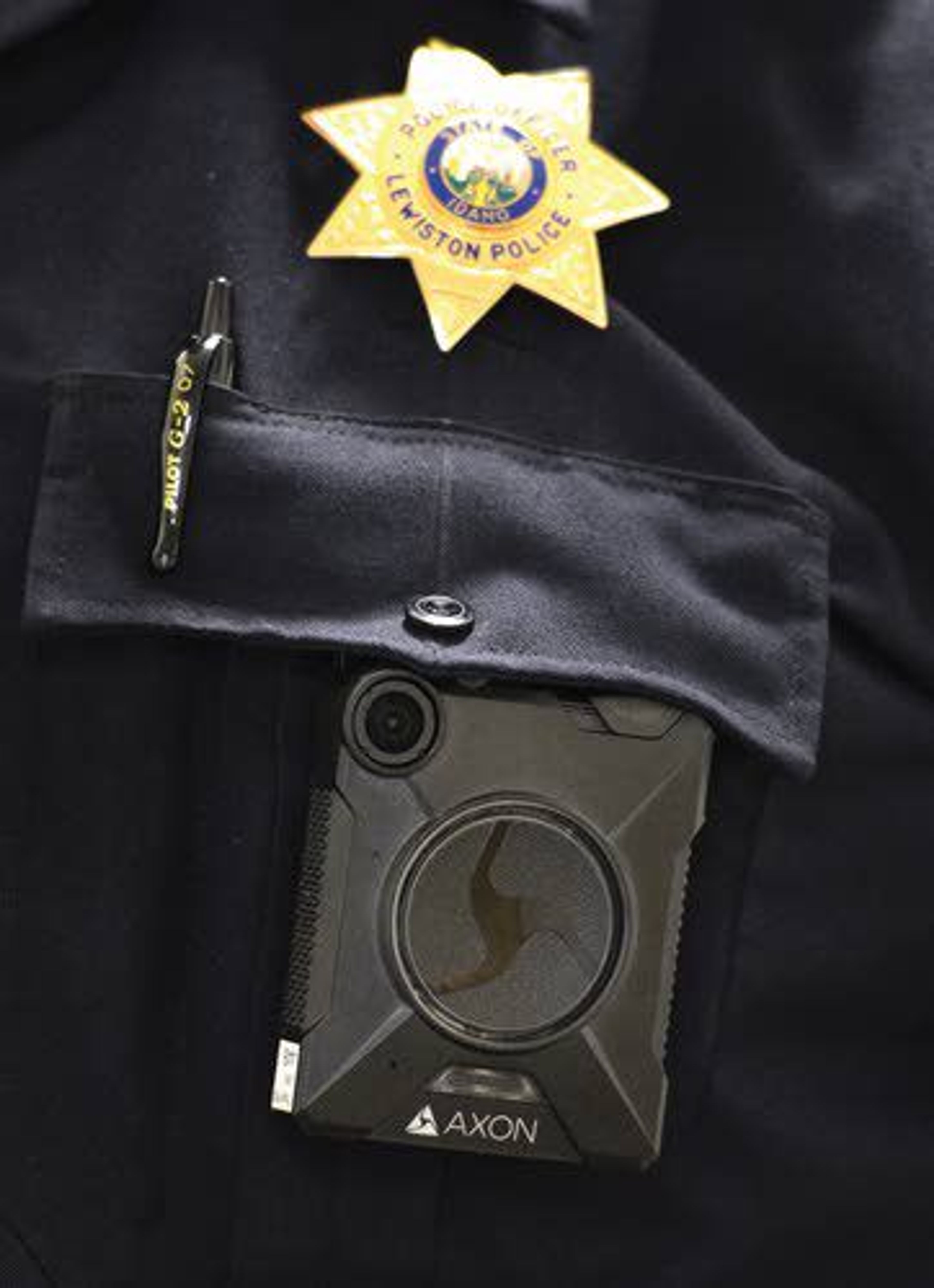LPD embraces body cams
5-year project helps police department purchase recording devices, upgrade its Taser arsenal
In an effort to increase transparency in police interactions, the Lewiston Police Department is preparing to roll out body-worn cameras for all its officers.
The cameras are part of a five-year project that adds a number of high-tech items to the department. A $34,695 grant will pay for the 37 body cams outfitted for each officer. The chest-worn cameras will begin being used department-wide at the end of the month.
By the end of the five-year program, patrol cars will be outfitted with new cameras that operate off of Bluetooth and switch on whenever emergency lights are activated. The department's interview rooms will also receive new video recording equipment. All that video data, from each device, is uploaded to a secure cloud server. The overall project will cost $326,189. The grant pays for the body cameras while the rest of the new technology will be paid for out of the police department's budget, said Rick Thanstrom, police systems coordinator.
"We're not trying to hide anything," Thanstrom said of the videos.
Officers are being trained on the cameras as well as a new batch of Tasers. Officers will be equipped with the cameras and Tasers simultaneously. The new version of the Taser contains two cartridges that allow officers to fire two discharges if a first set of probes is unsuccessful. The new Tasers aren't necessarily more powerful than the preceding stun guns, but offer a more stable shock and are less lethal to suspects.
Lt. Jeff Klone said officers will be required to activate their cameras anytime they take any kind of enforcement action. But in exigent circumstances - if an officer is under attack or needs to stop an active crime - officers are encouraged to take action rather than activating the camera first.
There have been numerous fatal incidents around the nation where a Taser was deployed on a subject who either had a heart problem or elevated heart rate because of the use of an illegal substance. Between 2001 and 2007, 245 deaths have been associated with the stun gun, though it's not clear if every death was a direct result of a Taser. The Washington Post reported 48 people died across the U.S. after being shocked by a Taser between January and November 2015.
The Tasers and body cams come as a package deal through the law enforcement products company Axon. Officers are required by department policy to keep the cameras on "standby" when on patrol, meaning the cameras aren't actively recording, but if activated, the past 30 seconds of footage will be retained, Thanstrom said.
In addition, whenever an officer turns his Taser on, the camera immediately begins recording, and retains the past 30 seconds. Thanstrom said the department is considering purchasing firearm holsters that also activate the cameras if an officer draws his weapon.
"We're still looking at that, we haven't made a decision on that. It's a couple hundred bucks a piece times 37 officers - that can get pretty pricey," he said.
Officers will be able to access their body-cam footage through their phones and patrol car laptops. While out in the field, officers can tag blocks of video and designate a case number to the video.
"It will also allow for greater clarity; our memories are fallible, as much as we think they're perfect," Thanstrom said.
He said the videos will be available through public records requests, though some sections may be redacted. Identifying details such as Social Security numbers would be muted in the audio of videos. He said the video software also allows for portions of video to be cut out or the image blurred if it violates personal privacy.
He said video is stored for different periods of time. Test footage or an officer mistakenly turning a camera on during non-policing activity will be stored for 210 days before being deleted. Video of incidents that involve a felony are retained for five years and critical incidents such as a terrorist attack are kept indefinitely.
Thanstrom said the department decided to buy the body cams in response to nationwide public outcry over cellphone videos of high-profile incidents such as the death of Philando Castile in Minnesota. Castile was shot and killed following a traffic stop and he told the responding officer he was a legal owner of a concealed permit weapon. Castile's girlfriend began live streaming video to Facebook after her boyfriend was shot.
Thanstrom said the body cameras will offer an officer's perspective that perhaps a cellphone video would not.
"It's about perspective; someone across the street on a cellphone won't have the same clarity that this video provides," he said. " We want to show people what we're doing and how we do it."
---
Holm may be contacted at (208) 848-2275, or tholm@lmtribune.com.











